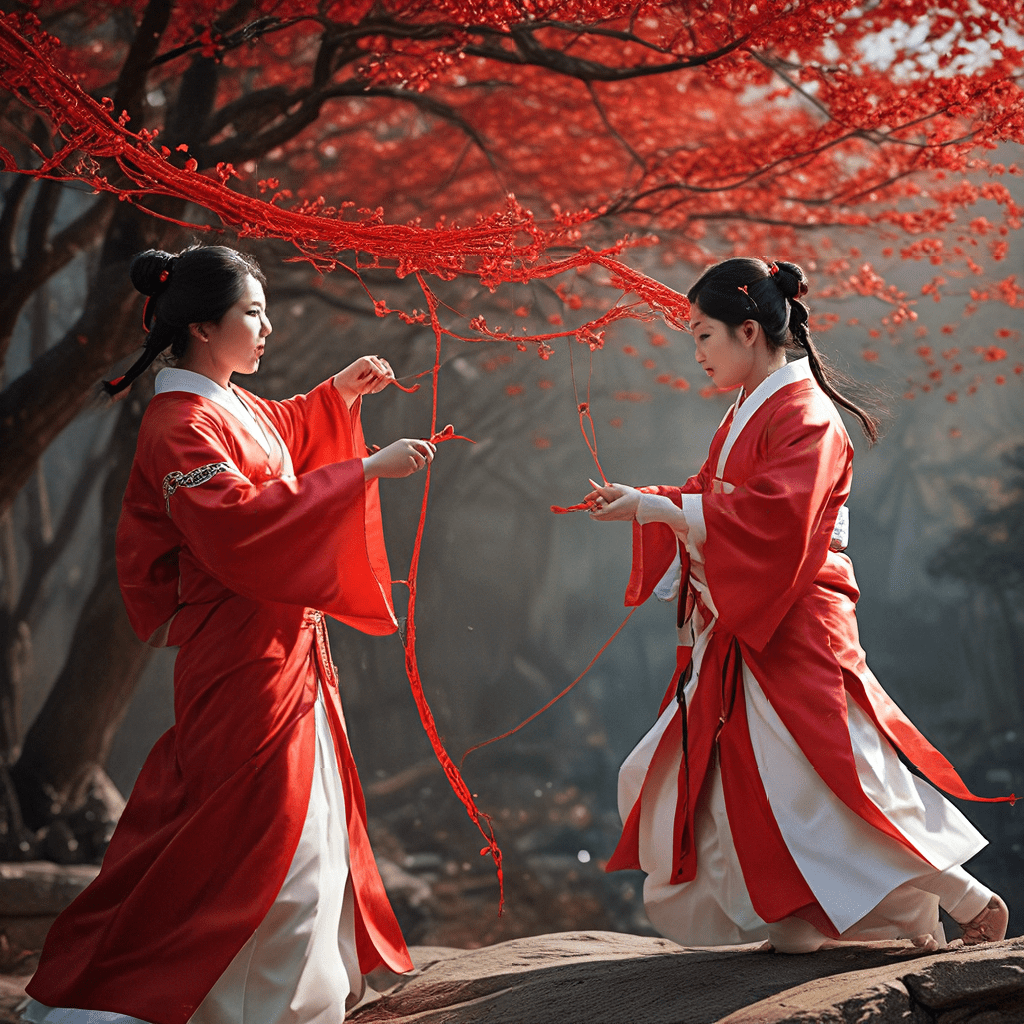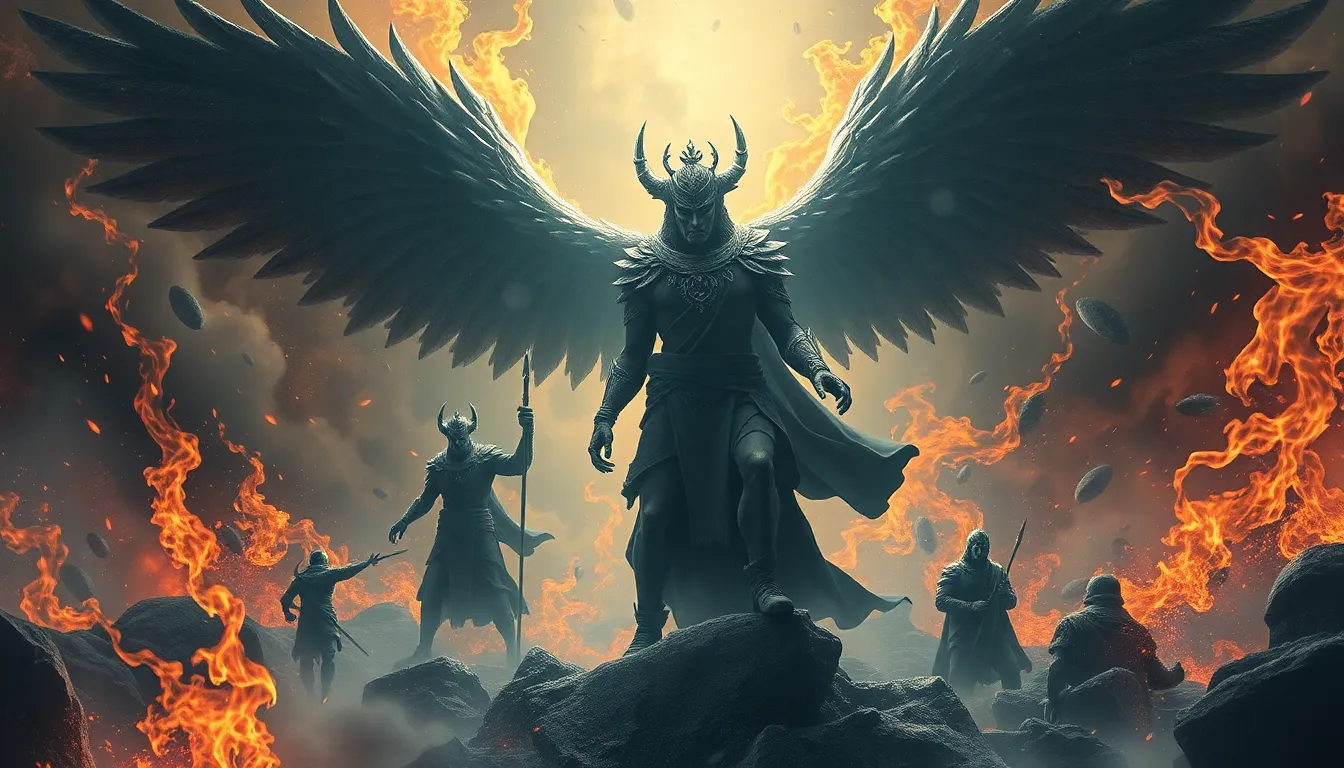The Red String of Fate: A Mythical Thread in Korean Tradition
The Red String of Fate, a powerful and enduring myth, holds a captivating place in Korean tradition. This mythical thread, invisible to the human eye, is said to bind together two destined souls, connecting them across lifetimes and oceans. The myth whispers that no matter how far apart individuals may be, or how many obstacles they face, the red string will always draw them back together. It is a fascinating proposition that has captured imaginations for centuries, offering solace and hope to those seeking love and connection.
Origins of the Myth: Tracing its Roots
The origins of the Red String of Fate myth can be traced back to ancient Chinese folklore. The myth tells the story of a matchmaker known as Yue Lao, who lives on the moon and is tasked with tying the red threads from the ankles of destined lovers. This story has been passed along for generations, finding its way into Korean culture, where it has been embraced and reinterpreted. While the origins of the myth may be Chinese, its significance and meaning have been shaped by Korean beliefs and traditions.
The Red String and Destiny: An Unbreakable Bond
In Korean tradition, the Red String of Fate represents an unbreakable bond between two souls destined to be together. This bond is believed to transcend physical limitations, social barriers, and even the passage of time. Whether individuals are born in the same village or continents apart, the red string will always guide them towards each other. The myth emphasizes a sense of fate and predestination, suggesting that certain connections are predetermined and cannot be altered.
The Red String as a Symbol of Serendipity
While the Red String of Fate evokes a sense of predestination, it also carries with it the alluring notion of serendipity. The myth suggests that even the most unexpected encounters can lead to profound connections, as two souls destined to be together will find their way to each other through a series of seemingly coincidental events. For individuals seeking love, the myth offers hope that their soulmate is out there, waiting to be discovered. This belief encourages optimism, reminding us that everything happens for a reason and that unexpected opportunities for love may be lurking just around the corner.
Seeking the Red String: Rituals and Superstitions
The belief in the Red String of Fate has led to a number of rituals and superstitions in Korean culture. Some individuals will wear a red string bracelet, hoping to attract their destined partner. Others may visit a temple or shrine dedicated to Yue Lao, seeking blessings and guidance in their search for love. The myth has become woven into the fabric of Korean society, influencing not just personal beliefs but also social practices. While these rituals may seem superstitious to some, they reflect the profound impact that the Red String of Fate myth has had on Korean culture.
Modern Interpretations and Adaptations
In modern times, the Red String of Fate myth has continued to evolve, finding new meaning and relevance in the contemporary world. While its traditional interpretation emphasizes predestination, many modern interpretations offer a more nuanced view. Some individuals see the red string as a symbol of shared destiny, where two souls choose to connect and support each other's growth and development. This perspective highlights the power of free will and emphasizes the active role that individuals play in shaping their own relationships.
The myth has also been interpreted as a metaphor for the power of attraction and the undeniable force that draws certain individuals together. This interpretation suggests that while fate may play a role in bringing people together, it is ultimately up to individuals to nurture and cultivate their connection. This perspective encourages a more active approach to love and emphasizes the importance of personal growth and self-awareness.
The Red String in Literature and Popular Culture
The Red String of Fate myth has inspired countless stories, films, and television shows. From romantic comedies to fantasy epics, the myth has been used to explore themes of love, destiny, and the enduring power of connection. One notable example is the popular Korean drama "The Legend of the Blue Sea," which features a couple who are bound by the red string through multiple lifetimes. The drama explores the complexities of fate and free will, as the couple navigates challenges and obstacles in their pursuit of love.
The myth has also been featured in various novels, manga, and anime, often serving as a central plot device or a recurring motif. The enduring popularity of the Red String of Fate myth in popular culture is a testament to its enduring appeal and its ability to resonate with audiences across generations. Through its presence in literature, film, and television, the myth continues to inspire and captivate imaginations, reminding us of the enduring power of love and the mysterious forces that shape our destinies.
The Red String and the Concept of Soulmates
The Red String of Fate myth is closely intertwined with the concept of soulmates. The myth suggests that each individual has a soulmate, a person destined to be their perfect partner and companion. This soulmate is believed to be connected to them by the invisible red string, guiding them towards each other despite the challenges and obstacles they may face.
The notion of soulmates offers hope and comfort to individuals seeking love, suggesting that their perfect match is out there, waiting to be found. It also provides a framework for understanding the profound connection that some individuals experience with their partners, suggesting that this connection is rooted in a deeper, pre-ordained bond. However, the idea of soulmates can also be controversial, as it can lead to the belief that there is only one "right" person for each individual, dismissing the possibility of finding love and happiness with other people.
The Red String and Free Will: A Contentious Debate
The Red String of Fate myth raises a fundamental question: how much control do we have over our destinies? The myth suggests that fate plays a significant role in shaping our relationships, suggesting that certain connections are predetermined and cannot be altered. This raises a contentious debate about free will and the extent to which our choices are truly our own.
Some individuals argue that the myth undermines the power of free will, reducing our choices to preordained destinies. They argue that the belief in the Red String of Fate can lead to passivity and resignation, as individuals may feel powerless to shape their own relationships. Others argue that the myth can be empowering, offering hope that love and connection are not merely a matter of chance but rather a reflection of a deeper, preordained bond. This belief can encourage individuals to trust in the universe and to have faith that they will find their destined partner when the time is right.
The Red String: A Myth that Continues to Captivate
The Red String of Fate myth remains a powerful and enduring story that continues to captivate imaginations across cultures. While its origins may be rooted in ancient Chinese folklore, the myth has found new meaning and relevance in Korean tradition. The myth offers solace, hope, and a sense of wonder, reminding us of the mysterious forces that shape our destinies and the enduring power of love and connection.
Whether you believe in the Red String of Fate or not, it's undeniable that the myth has a profound impact on our understanding of love, destiny, and the search for meaning in our lives.
FAQ
What is the red string of fate?
The Red String of Fate is a mythical thread believed to connect two individuals destined to be together, regardless of time, distance, or obstacles.
What is the origin of the red string of fate?
The myth originated in ancient Chinese folklore, where it is believed that a matchmaker named Yue Lao ties red threads around the ankles of destined lovers.
What does the red string symbolize in Korean tradition?
In Korean tradition, the red string symbolizes an unbreakable bond between two souls destined to be together, signifying a predestined connection.
How is the red string of fate used in modern times?
The myth has evolved in modern times, with some interpreting it as a symbol of shared destiny or the power of attraction. It is frequently used in popular culture, appearing in novels, films, and TV shows.
What is the relationship between the red string of fate and the concept of soulmates?
The red string of fate is closely associated with the concept of soulmates, suggesting that everyone has a designated soulmate who is connected to them by the invisible red thread.
Does the red string of fate undermine free will?
The myth raises a debate about free will, as it suggests that some connections are predetermined. Some argue that it limits free will, while others see it as a source of hope and guidance.



